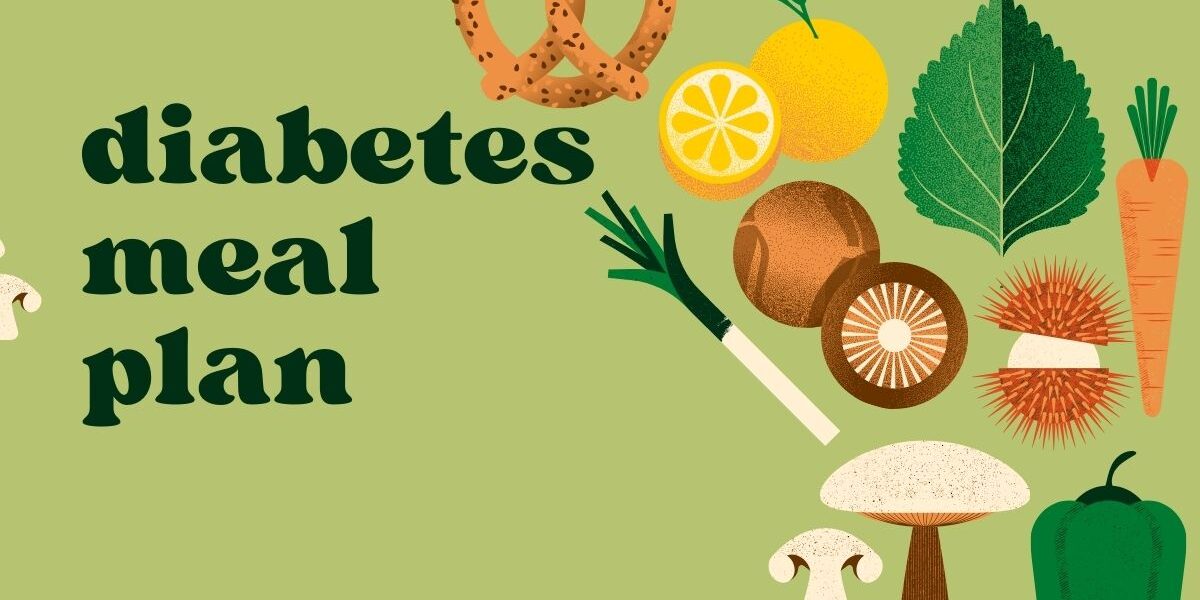
Living with diabetes requires careful planning, especially when it comes to your meals. A well-structured diabetes meal plan is key to managing blood sugar levels, maintaining a healthy weight, and preventing complications. Whether you’re newly diagnosed or looking for fresh ideas, this guide will help you create a weekly or monthly meal plan that fits your lifestyle. We’ll focus on balanced nutrition, portion control, and delicious recipes that make managing diabetes easier and more enjoyable.
Why a Diabetes Meal Plan Matters
A diabetes meal plan is more than just a list of foods to eat; it’s a strategy for maintaining stable blood sugar levels. By focusing on low-carb, high-fiber foods, healthy fats, and lean proteins, you can prevent blood sugar spikes and dips, keep your energy levels steady, and support your overall health.
Key Components of a Diabetes-Friendly Meal Plan
1. Balanced Nutrition: Include a variety of foods from all the food groups—vegetables, fruits, whole grains, lean proteins, and healthy fats. This ensures you get all the nutrients your body needs.
2. Portion Control: Even healthy foods can raise blood sugar levels if eaten in large quantities. Use measuring tools and be mindful of serving sizes to keep portions in check.
3. Low-Carb Choices: Carbohydrates have the most significant impact on blood sugar levels. Opt for low-carb options like leafy greens, non-starchy vegetables, and high-fiber grains.
4. Regular Meal Timing: Eating at consistent times helps regulate blood sugar levels. Plan your meals and snacks so you eat every 3-4 hours.
Weekly Diabetes Meal Plan
Here’s a sample weekly meal plan to get you started. Each day is designed to provide balanced nutrition, with a focus on low-carb, high-fiber, and high-protein foods.
Day 1:
– Breakfast: Scrambled eggs with spinach and tomatoes, whole-grain toast
– Snack: Greek yogurt with a handful of almonds
– Lunch: Grilled chicken salad with mixed greens, cucumber, and avocado, dressed with olive oil and vinegar
– Snack: Sliced cucumber with hummus
– Dinner: Baked salmon with steamed broccoli and quinoa
Day 2:
– Breakfast: Overnight oats made with chia seeds, unsweetened almond milk, and berries
– Snack: Apple slices with peanut butter
– Lunch: Turkey and cheese lettuce wraps with a side of baby carrots
– Snack: Celery sticks with cottage cheese
– Dinner: Stir-fried tofu with mixed vegetables and cauliflower rice
Day 3:
– Breakfast: Veggie omelet with mushrooms, peppers, and onions, served with a side of sliced avocado
– Snack: A small handful of mixed nuts
– Lunch: Tuna salad with mixed greens, cherry tomatoes, and olive oil dressing
– Snack: A small pear or an orange
– Dinner: Grilled chicken breast with roasted Brussels sprouts and sweet potato wedges
Day 4:
– Breakfast: Smoothie made with spinach, kale, unsweetened almond milk, and a scoop of protein powder
– Snack: A boiled egg and a small handful of walnuts
– Lunch: Lentil soup with a side of mixed greens salad
– Snack: Sliced bell peppers with guacamole
– Dinner: Baked cod with sautéed asparagus and a side of wild rice
Day 5:
– Breakfast: Whole-grain cereal with unsweetened almond milk and a handful of berries
– Snack: A small handful of sunflower seeds
– Lunch: Grilled turkey burger with a side of coleslaw made with yogurt-based dressing
– Snack**: Cherry tomatoes with feta cheese
– Dinner: Beef stir-fry with broccoli, bell peppers, and snap peas, served over brown rice
Day 6:
– Breakfast: Cottage cheese with sliced peaches and a sprinkle of cinnamon
– Snack: Baby carrots with tahini
– Lunch: Chicken and avocado wrap in a whole-grain tortilla, with a side of mixed greens
– Snack: A small apple
– Dinner: Grilled shrimp with zucchini noodles and marinara sauce
Day 7:
– Breakfast: Poached eggs on whole-grain toast with a side of sliced tomatoes
– Snack: A small handful of pistachios
– Lunch: Quinoa salad with black beans, corn, and avocado, dressed with lime juice and olive oil
– Snack: Sliced strawberries with a dollop of Greek yogurt
– Dinner: Baked chicken thighs with roasted cauliflower and a side of sautéed spinach
Tips for Customizing Your Meal Plan
– Swap Ingredients: Feel free to swap out ingredients based on your preferences or what you have on hand. Just keep the portions and nutritional balance in mind.
– Plan Ahead: Preparing meals in advance can help you stay on track. Consider batch cooking and freezing portions for busy days.
– Monitor Blood Sugar Levels: Keep track of your blood sugar levels to see how different foods and meal timings affect you. This will help you fine-tune your meal plan.
Healthy Diabetic Recipes to Try
Incorporate these easy-to-make, diabetes-friendly recipes into your meal plan:
1. Zucchini Noodles with Pesto and Grilled Chicken
2. Chia Seed Pudding with Almond Milk and Berries
3. Spaghetti Squash with Turkey Meatballs and Marinara Sauce
4. Avocado and Tomato Salad with Olive Oil Dressing
5. Roasted Vegetable Medley with Garlic and Herbs
Conclusion
Creating a diabetes meal plan doesn’t have to be complicated. By focusing on balanced nutrition, portion control, and regular meal timing, you can enjoy a variety of delicious foods while effectively managing your blood sugar levels. Use this guide as a starting point, and feel free to adjust it to suit your individual needs and preferences. With a little planning, you can make healthy eating a sustainable part of your lifestyle.





